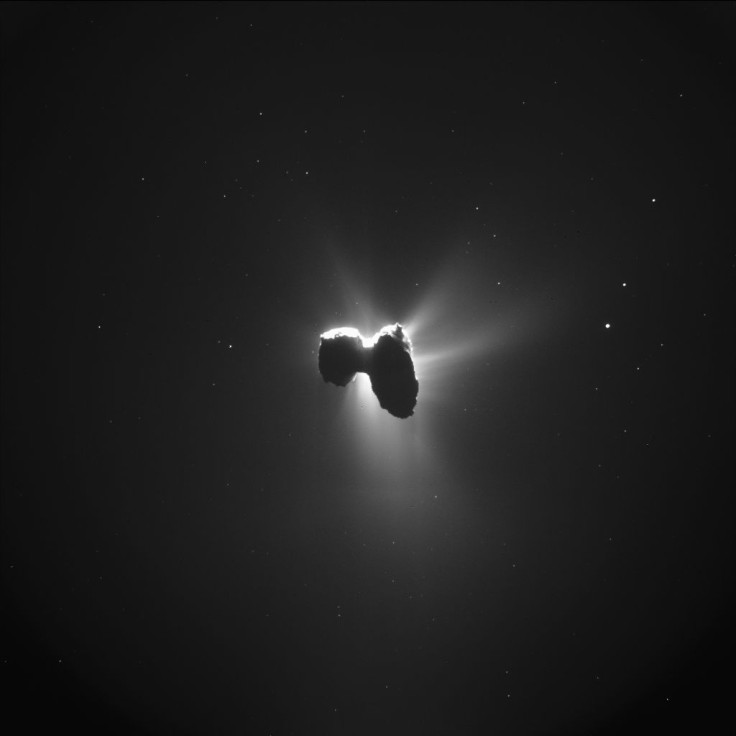Comets Produce Their Own Oxygen, Planets Could Do The Same Without Needing Life

In a new study published Monday in the journal Nature Communications, two researchers from the California Institute of Technology explained how comets can produce their own molecular oxygen. The process, as laid out by the Caltech scientists, could also be ongoing on other stellar bodies, such as exoplanets, allowing them to create oxygen gas without any biological inputs.
On Earth, oxygen accounts for almost 21 percent of air, and it was formed as a result of biological processes over the course of the planet’s history. In its molecular, gas form, oxygen (two atoms of oxygen make up a molecule, which is represented as O2) is very unstable in most places in space, since it reacts very easily with a large number of other substances, such as with hydrogen to make water or with carbon to produce carbon dioxide.
Therefore, it was little surprise that molecular oxygen had been observed only twice in space in star-forming nebulae. Till the European Space Agency’s Rosetta spacecraft discovered large amounts of it on the 67P/Churyumov-Gerasimenko comet it was studying, that is. Some scientists proposed the oxygen on the comet was frozen inside the comet since the solar system came into being 4.6 billion years ago, and was thawing from its surface. But that validity of that theory was questioned because the oxygen should have reacted with other chemicals long ago.
Read: Oxygen Dissolved In Earth’s Oceans Is Reducing
According to Konstantinos P. Giapis, a professor of chemical engineering at Caltech, and Yunxi Yao, a postdoctoral researcher at the university, this is what is actually happening on 67P: Heating by the sun strips water vapor molecules from the comet, and they stream away. Before they get too far, they are charged by the ultraviolet radiation from the sun and the solar wind flings them back toward the comet.
“When the water molecules hit the comet’s surface, which contains oxygen bound in materials such as rust and sand, the molecules pick up another oxygen atom from these surfaces and O2 is formed,” according to a statement by the university.

Giapis, who usually works on new ways to create microprocessors used in computers, took an interest in space and was looking for places where ions, or charged particles, accelerate against larger surfaces. And when he saw data from the Rosetta mission, he found a lot of similarities with experiments he had been doing in the laboratory for 20 years.
“After looking at measurements made on Rosetta’s comet, in particular regarding the energies of the water molecules hitting the comet, it all clicked. What I’ve been studying for years is happening right here on this comet,” he said in the statement.
Read: Where Did Earth’s Water Come From?
The possibility of this non-biological process taking place on planetary bodies outside our solar system is quite exciting, since it would affect the way we search for life beyond Earth and the solar system.

Paul Goldsmith, an astronomer at NASA’s Jet Propulsion Laboratory — which is managed by Caltech — who was also part of the mission that first confirmed the presence of O2 in space in 2011, said in the statement: “Oxygen is an important molecule, which is very elusive in interstellar space. This production mechanism studied in Professor Giapis’ laboratory could be operating in a range of environments and shows the important connection between laboratory studies and astrochemistry.”
The study describing the abiotic process in detail is titled “Dynamic molecular oxygen production in cometary comae.” The National Science Foundation/Department of Energy Partnership for Basic Plasma Science and Engineering provided funding for it.
© Copyright IBTimes 2024. All rights reserved.




















